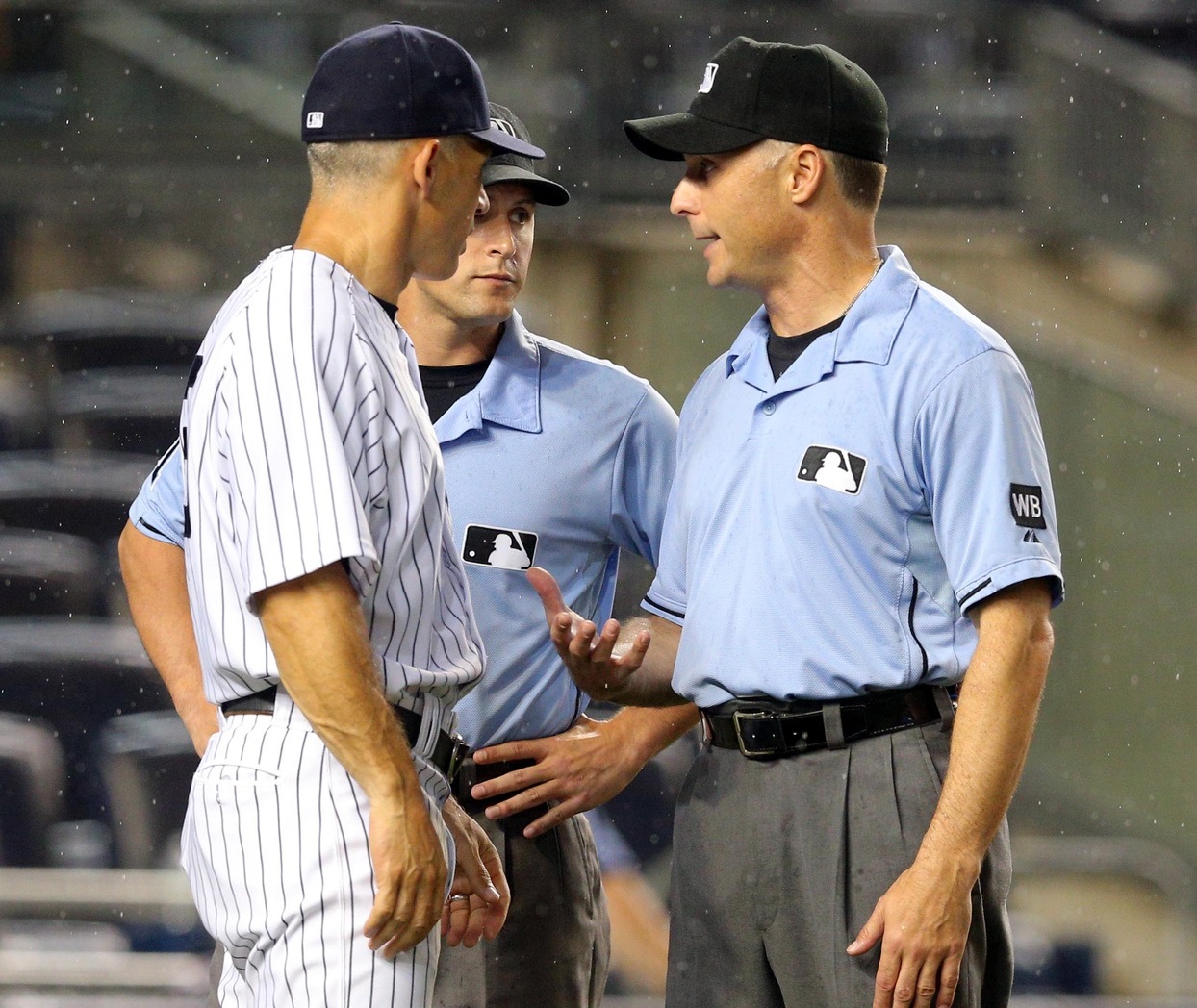It was the turning point of Tuesday’s game. In the eighth inning, Astros shortstop Carlos Correa hit a dribbler on the first base side of the mound. Dellin Betances had to scramble down to get the ball. When he turned to throw it to first base, he chucked it over everyone and into right field. At first blush, it appeared to just be a case of a reliever bungling a non-routine play. When that reliever is nothing but arms and legs, like Betances, it’s even less surprising that the play god bungled. Then, we see this.
Correa was blatantly running inside of the baseline. That’s not legal. A runner has to run to first base on the dirt. So why was it that Correa was ruled safe? Crew chief Dana DeMuth said after the game that the runner is “fine unless he impedes or hinders the first baseman or actually a fielder from making a play at first and he didn’t. That ball was so high that in my judgement that was just an error, a bad throw.”
Basically, DeMuth argued that because Betances’ throw was so far over the runner’s head that there’s no reasonable way that Correa could have possibly interfered with the play. That’s all fine and dandy, except let’s think about why Betances’ throw was that high. Correa is basically right in the line of fire between Betances and Mark Teixeira. Betances didn’t have an open lane in which to throw the ball to first base. That’s interference by any definition of the word. If a runner moving from first to second on a double play launches himself in front of a throw from the shortstop to first base, it’s blatantly illegal. Yet Correa can run on the grass to throw this play into disarray?
More often than not, this kind of infraction is punished when a fielder’s throw literally hits the runner in the back. It makes the interference plain as day and gives umpires an easy excuse to call for an out. In fact, it’s exactly what DeMuth said Betances should have done.
“Do it,” DeMuth said in a statement. “Throw it into the runner’s back. Because then what’s happening? He is impeding.”
There’s a lot to unpack there. An umpire is literally advocating that players be intentionally thrown at. Baseball explicitly forbids throwing at runners to call them out. Yet DeMuth, the chief of his umpiring crew, thinks that it’s acceptable in this situation. What does the rule book have to say on this situation?
Sub-section 3 of rule 7.08, a rule that dictates when runners are out, states that a runner may be called out when “He intentionally interferes with a thrown ball; or hinders a fielder attempting to make a play on a batted ball.” This is a rule that requires an umpire to make a judgement call, and therefore is prone to being misapplied or egregiously not applied at all. The latter scenario is what seems to have happened on Tuesday. Correa being out of the base path alone is an issue, and then his interference was not held against him. Two rules were blatantly broken, and neither transgression was punished.
“Do it,” DeMuth said in a statement. “Throw it into the runner’s back. Because then what’s happening? He is impeding.”
There must be a way to amend this sort of thing. Without any mechanism by which to go back and call the runner out, especially on a play like this one where a run scored from third, runners have every incentive in the world to run on the edge of the grass with the intent of forcing fielders to rush and bungle plays. From a pure gamesmanship perspective, why wouldn’t Correa run on the grass in this situation? Betances isn’t exactly built to make small, precise plays, and the go-ahead run was sitting at third base. Run on the grass, try to force Betances to make a bad throw, take the lead. It’s simple and logical. The call is rarely made without the runner being struck, after all.
The solution to this is very simple. Baseball must make the baseline call reviewable. Nearly every park is already outfitted with cameras that look down the first and third base lines for broadcast purposes. Why not simply use those angles to execute reviews? It wouldn’t force judgement calls like interference to be subject to review, which the umpire’s union seems to have an issue with, and it creates a safety net for one of the most basic rules in the game.
As things currently stand, umpires like DeMuth are advocating that defenders intentionally throw at runners. That’s dead ball-era logic that’s been gone and buried for a long time now, and doesn’t need to return. Baseball claims that it cares about player safety by trying to eliminate home plate collisions and instituting the new slide rule. There’s therefore no excuse for DeMuth’s advocacy for that sort of play. This is an easy call, and one that’s long overdue. The balance of the game completely shifted in that one play. It’s a disgrace, and something must be done.
Lead photo: Brad Penner / USA Today Sports

